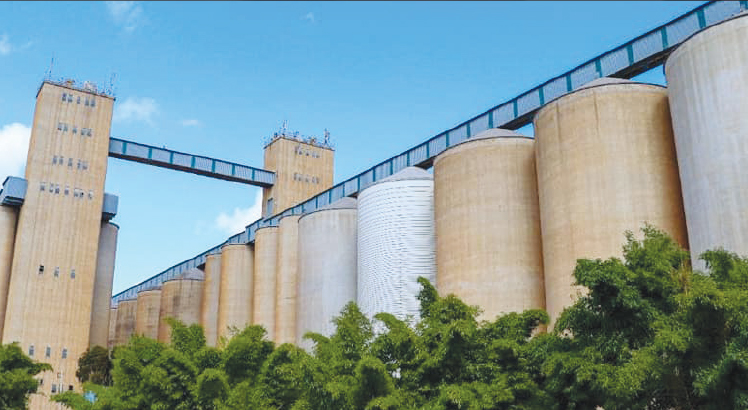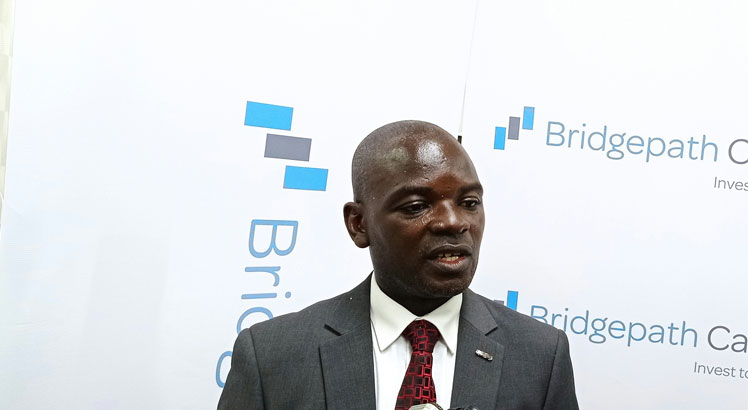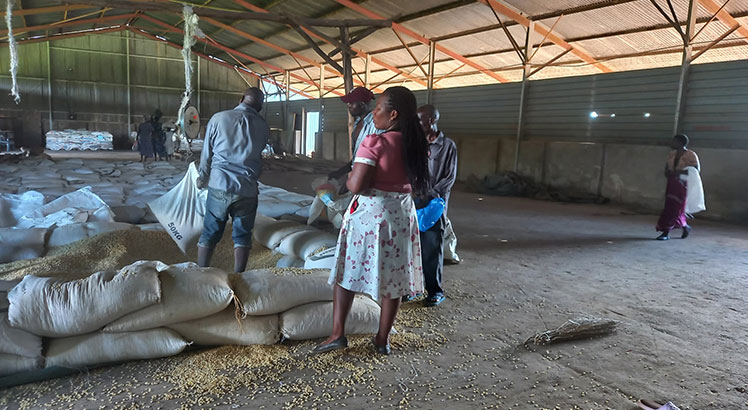National maize stocks run low
Maize stocks in the strategic grain reserves (SGR) managed by National Food Reserve Agency (NFRA) have dropped to 68 000 metric tonnes (MT) which is about half the tonnage required to address hunger.
The agency said maize stocks in the SGR stand at 68 000MT while the Department of Disaster Management Affairs (Dodma) needs 164 000MT to implement the food insecurity response apart from the cash transfers.

Dodma earlier secured $78 million (about K132 billion) for cash transfers and already started the disbursements.
In an interview on Thursday, NFRA acting chief executive officer David Loga said the agency has depleted the funds allocated for the procurement of maize after Dodma and Agricultural Development and Marketing Corporation (Admarc) drew some of the maize aggregated to respond to Cyclone Freddy and embark on price stabilisation.
He said NFRA was given K18 billion for maize purchases and is now remaining with about K200 million.
Said Loga: “We had targeted to get to 105 000 metric tonnes but we reached 119 000MT. If we take everything that we have aggregated as well as the opening balance, we managed to aggregate 119 000MT.
“As we speak, we have about 68 000MT which Dodma is drawing. So far, Dodma was approved to draw 23 000 metric tonnes for October. They are yet to come back to the SGR and commercial maize committee to ask for draw downs for November 2023.”
But Dodma is expected to reach some of the households facing hunger with 164 000MT of maize and it has just started drawing the 23 000MT approved for October.
On how NFRA will fill the gap in maize Dodma requires to support people facing hunger, Loga said there are plans to put more beneficiaries under cash transfers so that there is less pressure on the maize, adding Dodma is still receiving support in terms of cash.
He said there are still efforts to bring in more maize, saying the World Bank is supporting importation of 30 000MT of maize from Tanzania expected to be in the country by January.
“Dodma is also speaking to a lot of partners. The cash requirement might go up and the grain requirement might go down depending on how it plays out,” said Loga.
He conceded that it will be difficult to have the current quantities run up to March; hence, the need for more efforts to bring in maize.
Apart from Dodma, Admarc will also be looking to draw maize for price stabilisation.
However, Loga said it is not clear how much Admarc would require at the moment, saying they have not made requests for such.
In a separate interview, Dodma commissioner Charles Kalemba said there should be no cause for worry in the maize gap as resource mobilisation is underway.
He said already, the British Government has supported the response programme with five million British pounds (about K11 billion) which will go towards cash transfers and procurement of maize.
He said the World Bank is also procuring 30 000MT and World Food Programme (WFP) is also procuring maize from Mozambique to support the food insecurity programme.
“So, the maize is not only coming from NFRA. There are partners that are supporting us and we will continue to look for resources. Government is also providing more resources,” said Kalemba.
He added that Dodma and the partners have secured finances for a number of councils that are benefiting from the cash transfers.
Kalemba said Dodma will soon produce a comprehensive report on how much has been raised and how implementation of the response is progressing.
Asked if Admarc will be drawing maize from NFRA anytime soon or before the end of the lean period, Admarc chief executive officer Dan Makata said it is not for Admarc to decide to go and draw maize from NFRA.
Parliamentary Committee on Agriculture chairperson Sameer Suleman wondered why the government is not releasing the maize to support people that are facing hunger. He lamented that people are surviving on maize bran and now the bran has become scarce and its price is skyrocketing.
He urged government to stock Admarc depots with maize before the situation gets out of hand.
The Malawi Vulnerability Assessment Committee established that 4.4 million people will not be able to meet their annual food requirements for the 2023/2024 consumption period.
Out of the 2023/24 food insecure people, 470 000 are from the four cities namely Mzuzu, Lilongwe, Blantyre and Zomba, and 3.9 million are in rural areas across the country.





